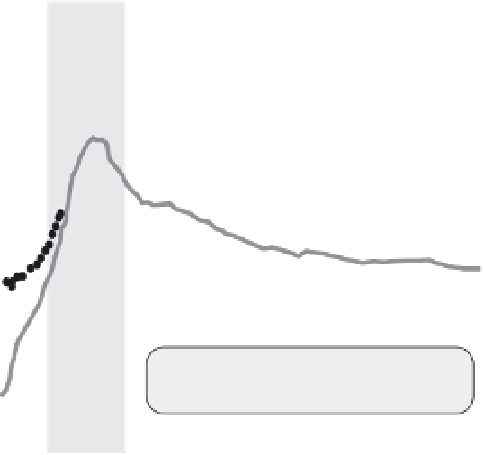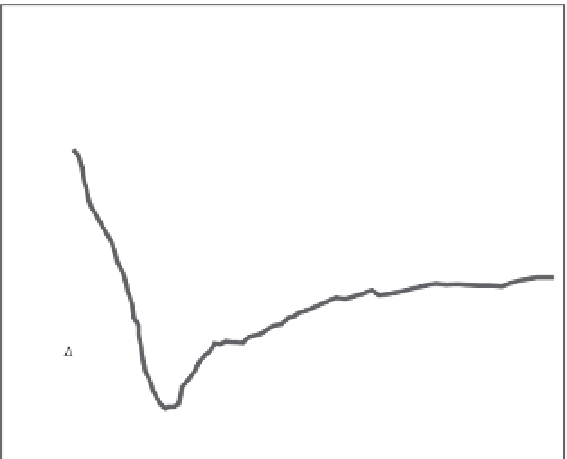Geology Reference
In-Depth Information
1500
15
immediate post-seismic
(1947-64)
1000
10
mid-interseismic
(1964-79)
late interseismic
(1929-39;1895-97)
coseismic (inverted)
500
5
0
0
coseismic
-5
Coseismic versus
Interseismic Displacement
-500
zone of maximum deformation
SE
-10
NW
-1000
100
150
200
250
300
350
400
Distance from the deformation front (km)
Fig. 4.3
Symmetry of interseismic, coseismic, and post-seismic deformation.
Three intervals of interseismic or post-seismic deformation are represented in the Nankaido region, Japan: immediate
post-seismic (1947-64); mid-interseismic (1964-79); and late interseismic (1895-97, 1929-39). These data are
compared with the inverted coseismic deformation profile. Note the spatial coincidence of the peak zone of
deformation for each data set. The regional pattern of interseismic deformation closely mimics the inversion of
the coseismic deformation. Modified after Hyndman and Wang (1995).
variations on Reid's (1910) periodic earthquake
cycle have been postulated. In Reid's
periodic
model
, the frictional strength of the fault, the
stress drop (the difference in stress across the
fault prior to and following the earthquake),
and the slip associated with each earthquake
are constant from event to event, such that
both the time of each earthquake and its mag-
nitude are predictable (Fig. 4.4A). In a
time-
predictable model
, earthquakes always occur
when a critical stress threshold is attained
(Fig. 4.4B). The amount of stress drop and the
magnitude of slip, however, varies from one
earthquake to the next. Assuming that the
accumulation rate of interseismic strain is
constant and that the amount of slip in the
previous earthquake is known, this model per-
mits a prediction of the time until the next
earthquake, because the stress needed to
attain the failure stress is known. The displace-
ment of that forthcoming earthquake, however,
is unknown. Alternatively, a
slip-predictable
model
suggests that slip during an earthquake
always terminates when the stress has dropped
to a critical level (Fig. 4.4C). The stress level
and strain accumulation at the time of rupture,
however, vary between earthquakes, as does
the time between successive ruptures. Thus,
given a constant interseismic strain accumula-
tion rate, knowledge of the time since the
previous earthquake permits prediction of the
amount of slip that would occur at any given
time. But, it does not reveal when the next
earthquake will occur, because no critical
stress threshold is common to successive
earthquakes. Finally, recent observations sug-
gest that earthquakes may occur in temporal
clusters, such that a cascade of earthquakes
occurs over a relatively short interval followed
by prolonged intervals of quiescence (Rockwell
et al.
, 2000; Wallace, 1987). The
clustered-slip
model
(Fig. 4.4D), also called the “Wallace-
type” model (Friedrich
et al.
, 2003), suggests
that when a cluster will initiate is unpredictable,





























































































































